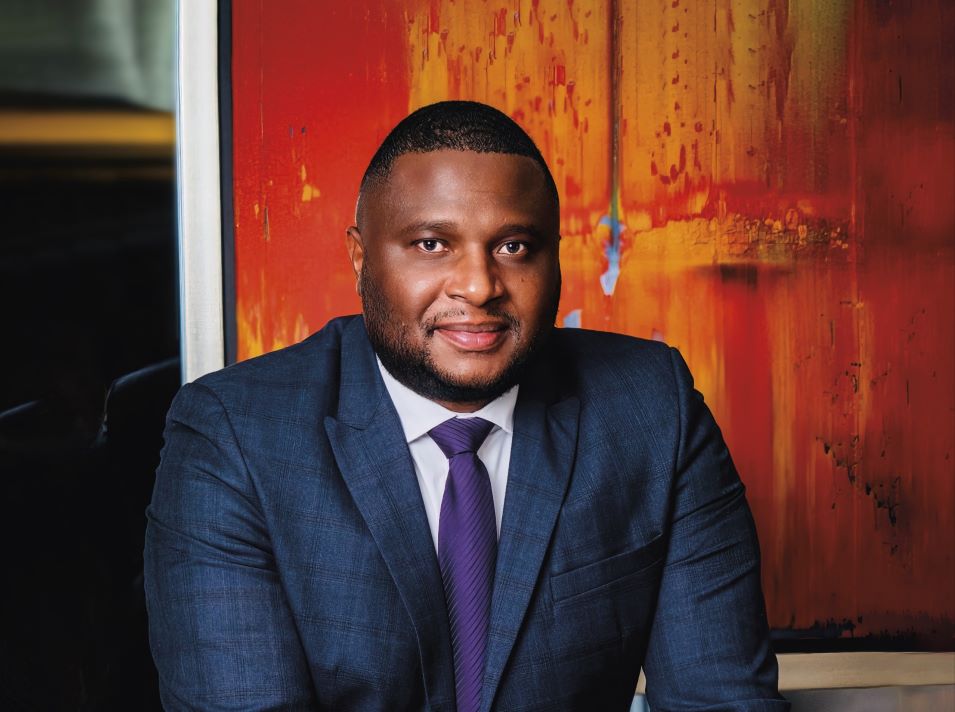A housing model is being rolled out that will see affordable and integrated developmental cities developed around the continent. That’s the dream of Rali Mampeule, founder and Chief Executive Officer of the African Housing and Infrastructure Fund (AHIF).
This is not a dream that exists in the clouds, this is a dream based on what this successful entrepreneur has already achieved with an innovative solution to a shortage of good-quality affordable housing. As a result of this far-sighted vision, thousands of plots of land in South Africa now have family homes on them. And the dream is not limited to bricks and mortar either. Rali and his team have been cooperating with scientists and researchers to work on and develop the latest technology to fast-forward the process of developing and building homes.
The essence of the model is that Rali and his team buy land and prepare it for development. Given that in South Africa, many regional authorities were returning unused funding meant for the development of housing to the National Treasury, Rali set out to prise open that bottleneck of funding and development that was choking the delivery of housing.
To deal with what he calls South Africa’s “two-million-unit housing crisis” Rali established the South African Housing and Infrastructure Fund (SAHIF) as a means of tackling the challenge of affordable housing in South Africa. The African Housing and Infrastructure Fund, to be launched in 2023, is the continental vehicle for taking on the same challenge. Says Rali, “We thought we could come up with a plan to accelerate the delivery of affordable housing by buying land and getting it ready for development. Then we put it out on the market for people to buy.”
The Model
As a young man working as an estate agent, Rali was able to observe the processes of land development at first hand. What he saw was a lack of understanding of the complexity of the process. “You don’t get a billion-rand today and tomorrow you can start building on the land,” he notes.
The town planning, permits and permissions might take two years and this was not properly understood. He saw a gap and so began the process of buying land, going through all the processes and installing services to make it ready for development. The baseline of the model is outlined by Rali as, “We accelerate the delivery of affordable housing by getting the land ready.”
Normally, the fund will sell the land once it is developed. Buyers could be listed companies, government agencies, government itself or private developers. “They can also help in accelerating the delivery of affordable housing,” says Rali.
“The bulk of it is for affordable housing,” notes Rali, but he stresses that schools and social amenities must also be part of the package. “It must become a sustainable development.” A vital aspect of the process is the planning framework of the relevant city. “We always work within the spatial development guidelines of the city,” says Rali.
SAHIF will do various reports such as geotechnical, traffic impact and social impact studies in order to be better prepared and to pass on relevant information to government. If the reports find that a hospital is needed, this conclusion is passed on. The idea is to work hand in hand with government, using the spatial development framework as a guideline.
Bulk services are not always available because the local authority might not have the capacity. In those cases, SAHIF aims to work with government by installing the services and then recouping its expenditure through rebates over a period of time. This approach allows the development to get started without the delay of waiting for services to be installed.
The SAHIF model has run for four years in South Africa and delivered just over 68 000 land opportunities or serviced stands to South Africans.
Rali sums up this approach as follows: “The advantage of this model is that it accelerates the delivery of affordable housing. We help institutions so that they don’t have to return their budgets and residents benefit by being able to build units on the land that has been prepared.
“We are an enabler of affordable housing because we are on the ground. We install the services and we go through the whole land banking process. We can do it at a speed because we are focussed and that’s what we do.”
SAHIF in numbers
- R15.3-billion: pipeline to be realised over three years
- R1.7-billion: land value invested by shareholders
- 100% black owned and managed
- 108 160 stands expected to be realised through pipeline leading to 424 840 South Africans being positively impacted
- Five provinces: strong geographic diversification throughout South Africa
South African Housing and Infrastructure Fund (SAHIF) management has a strong history of successful land acquisition and disposal. 1 476ha of land previously acquired was sold in a period of 24 months. This would result in a yield of approximately 73 800 units being developed from this land (not all of the land was sold as serviced land). These transactions had a positive impact in changing the lives of 295 200 South Africans, calculated on the basis of an average of four people per LSM 1-4 household.
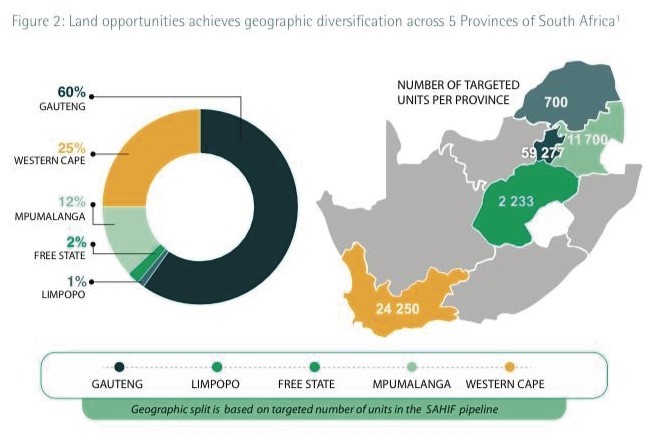
Remarkable Progress
The SAHIF model has run for four years in South Africa and delivered just over 68 000 land opportunities or serviced stands to South Africans. Rali puts this achievement in human terms. “If you times that by four–because in each house you can estimate four people staying there–you can imagine the impact that we are having in terms of the delivery of affordable housing in the country.”

Angel investors helped to get the fund off the ground and some family businesses also invested. By selling off a sizeable quantity of land, enough liquidity was created for the fund to now be self-funded in South Africa. Rali reports, “The fund is able to buy its own land and resell it without the need to open more rounds for investors.”
Entrepreneurial Beginnings
The first project undertaken by SAHIF was in Ekurhuleni, east of Johannesburg. Although Rali was born in Tzaneen in Limpopo, he spent many years in nearby Daveyton as a boy so there was added excitement for the property developer to be working on a project in the area where he grew up. A 568 ha piece of land yielded close to 18 000 housing opportunities.
Rali’s entrepreneurial spirit found its first expression in fast food while he was studying for his part-time undergraduate degree through Unisa.
“I started my first business by selling boerewors rolls at Kyalami in Midrand. I have always been eager to become an entrepreneur. Entrepreneurship is not something that you learn. It is almost like hunting; you go out there and you find ways to get things done. You ask questions and then you build a business that makes sense.”
Rali had the good fortune to meet a man who was willing to give him opportunities, Charles Everett. Rali’s 23-year journey in property had begun. First, as an assistant estate agent and then Rali bought a franchise and was able to pay that off within two years.
Rali takes up the story: “I partnered with my brother and the CEO of Chas Everett franchises, Barry Davies, to help me with working capital. Two years later I had built a business in Midrand called Chas Everett Midrand. We managed to sell a development for more than R26-million and we had made ourselves a commission of about R6-million, which we used to pay off the franchise and buy out the partners that I had brought into the business. I continued to invest in land and the land appreciated in value. The value of some land in Ekurhuleni in particular rose. That’s where our family business started.”
African Housing and Infrastructure Fund
With SAHIF having achieved such remarkable success in South Africa, the model will now be deployed in other parts of Africa. Mampeule recently formed the single biggest black private investment company in optical fibre called Digital Investment Consortium (DIC) in South Africa, through an investment in Metro Fibre Networks (MFN), South Africa’s third-biggest fibre-services provider.
In addition, he is a founder of the African Housing and Infrastructure Fund (AHIF), which aims to raise as much as $225-million to invest and diversify its digital and land infrastructure investment portfolio throughout the continent.
“We plan to raise capital from local and international pension funds, DFIs and LPs and we have already started knocking on doors as you may have seen us in Davos, Switzerland earlier this year. The capital raise creates a valuable investment platform from which AHIF will scale its current investments in high-speed fibre-Internet access through MFN and other strategic digital infrastructure related business in Africa,” he says.
Equally the funds will allow AHIF to accelerate the delivery of affordable housing and facilitate the founders’ ambition to invest in ancillary value chain opportunities such as innovative home loan products in the financial services sector and technological opportunities presented by the zeitgeist of the 4IR and Shelter Tech in South Africa and the rest of Sub-Saharan Africa.
We are an enabler of affordable housing because we are on the ground. We install the services and we go through the whole land banking process. We can do it at a speed because we are focussed and that’s what we do.
Rali is clear that the goals transcend simply building houses: “At AHIF, we recognise the urgent continental and global need for upgrading or building new infrastructure to ensure accessible affordable housing, clean water, transportation, electricity, sanitation and digital infrastructure.” The move by large numbers of people from rural areas to urban areas is a global phenomenon, and Africa is experiencing this urbanisation in every part of the continent.
Rali is solution-focussed: “We need to address that situation by building new cities around the continent.” Using the SAHIF model that has worked so well in South Africa, Rali says, “Firstly, we are going to be looking at Tanzania, Uganda, Kenya and Rwanda in East Africa. SADC is important for us as we are based in South Africa so we are also looking at Zimbabwe, Namibia, Zambia and some parts of Lesotho. We feel that we will be able to penetrate that and at a later stage we will look at Botswana as well.”
Rali has started travelling to consult and investigate possibilities. He has met with Rwandan President Paul Kagame in the context of a mooted collaboration with the Sherrie Silver Foundation in the creation of a Talent Development Centre in that country.
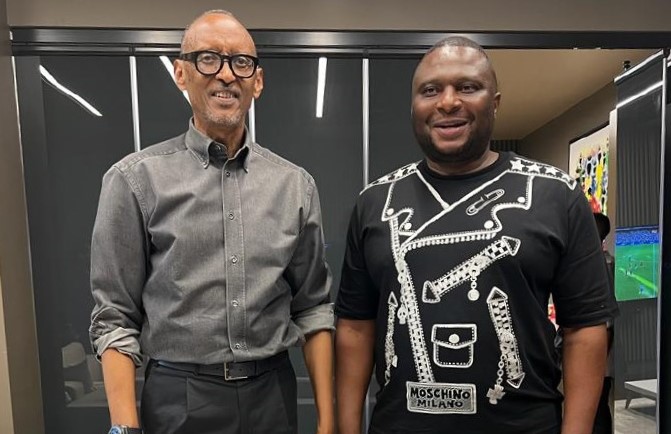
He furthermore had talks with the Mayor of Kigali about the sort of infrastructure that will define AHIF’s investment strategy on the African continent. Rali is determined that the AHIF must make a big difference on the continent. “We are an impact investor so whatever business we get involved in must make a difference in the community,” he stresses. The impact will be made in several ways.
“Firstly, by creating jobs,” says Rali. Also, in terms of bringing in new blood into the real estate sector and empowering young people, women and youth. He wants to make sure that they have “new opportunities that they never used to have”. Rali firmly believes that the construction industry can help regional economies to recover. “We are here to stay. We want to work with institutions, private investors and family offices in making sure that we can create job opportunities by using innovative construction.”
Building an Ecosystem
As the affordable housing model is growing and expanding into other areas of Africa, so the offering is expanding in diversity and scope. Just as SAHIF has invested in fibre businesses in South Africa to enable it to service the land it buys, so AHIF will invest in fibre in other parts of Africa, bringing connectivity to some areas that are under-serviced at the moment. And Rali’s thinking goes beyond land, housing and the Internet. He wants to be able to help people solve a range of issues such as home-loan financing and energy availability and he is conceptualising what he calls an “ecosystem” to tackle them.
On home loans: “We are also aware that there are some challenges in terms of funding of home loans. Most of the market that we are targeting is battling to get home loans. Traditional home loans are declined for various reasons where you find that maybe the people are small-business owners and the bank’s criteria doesn’t work the same way. We want to create a product within the same fund where we are able to give people what we call incremental funding for them to build their houses slowly like it used to be done in the old days.”
Most excitingly, the ecosystem business approach has identified the renewable-energy value chain as indispensable to its ESG investment and asset diversification strategy. In this regard SAHIF has establish a new team of competent renewable energy investment professionals to inform its foray into ESG. The ecosystem begins with the land, extends to the financing of a structure, the building of a structure and the energy needed to power that structure. “Before that,” says Rali, “we install fibre in their units so that they are connected and lastly, we are going to make sure that they are able to work and play in the same area so we will invest in retail centres and create work opportunities in the same way that we are doing in this country.
“Essentially, we will be building new cities around the continent that are integrated developmental cities. In South Africa we have not built a lot of new cities since 1994, so we want to be in that space of building new cities. There is a lot of demand in terms of housing where people are moving from rural areas into urban areas.”
New Technologies
To solve long-standing problems, new solutions are needed, according to Rali. As he says, “If you’re going to use the same method to solve the problem you are not going to be able to make a big difference. We looked around and said what other methodology and innovative construction methodology can we come up with for us to be able to accelerate delivery of affordable housing.”
One of the things on the agenda is to build houses using 3D printing. In January 2023 a typical RDP house was put together in a day in a project undertaken by the National Department of Science and Innovation (DSI) and the Sustainable Materials and Construction Technologies Research Centre (SMaCT). Rali is chairman of SMaCT, which is a unit within the University of Johannesburg’s School of Engineering and the Built Environment. The plan is to use 3D printing in South Africa first before rolling the technology out across the continent. That drive has started. Says Rali, “AHIF is donating a 3D printing centre for youth development as a part of introducing our technology in Rwanda.”
“We have partnered with a Dutch 3D printing manufacturing company called CyBe,” reports Rali. “We are excited that we are going to be using those machines to print houses around the SADC region as well.”
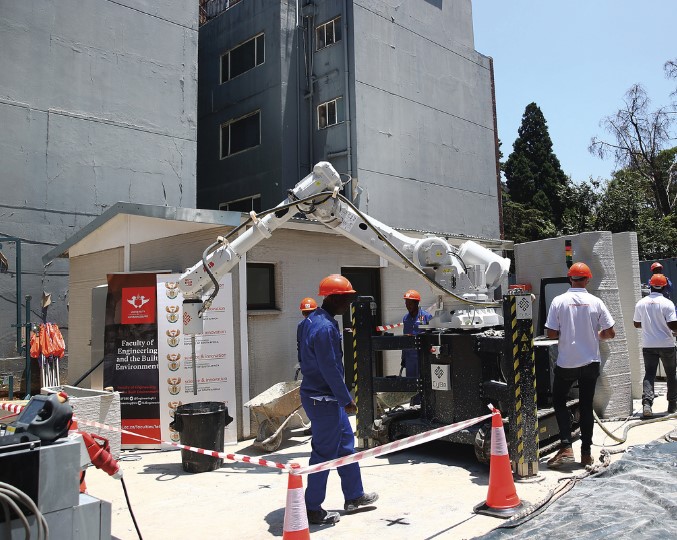
Rali describes this option as “new technology for this generation”. He believes that it is something that is going to become the future, not only for affordable housing, but also for high-end properties. “It’s an exciting time for us as our partnership with CyBe can accelerate that delivery of affordable housing in South Africa,” he adds. Rather than worry about technology pushing people out of jobs, Rali notes that previously under-employed sections of the population such as young people and women will have more opportunities in the sector than has been the case in the past.
“We are studying the impact of this technology on jobs,” he notes. “Young people are going to be interested in this type of technology and we are going to be able to bring in women who may be struggling to get into the construction industry.”
Although the technology won’t necessarily be cheaper, it will definitely result in a project being completed in less time than a conventional scheme. “We can definitely say that it is fast and if you do a project faster, you automatically save some money but it is not necessarily the cheapest method.” Rali maintains that the quality of 3D printing building is also better than the traditional bricks and mortar approach. He is upbeat about what technology is doing and what it might do in the future.
You don’t need money to make money
The reference to young people being interested in new types of technology is no coincidence. Mentorship and education are a big part of this entrepreneur’s DNA and Rali cares deeply about young people being given a chance. Through the Mampeule Foundation, the Rali Mampeule Property Mentorship ensures that new entrants to the real estate sector have a chance to learn from experienced practitioners and take courses to improve their skills and certification levels.
Support for participants on the programme includes partnerships with the South African Property Investors Network and the South African Institute of Black Property Practitioners (SAIBPP). The Foundation supports the SAIBPP UCT Property Entrepreneurship Programme and the SAIBPP Student Chapter meetings and mentorship sessions.
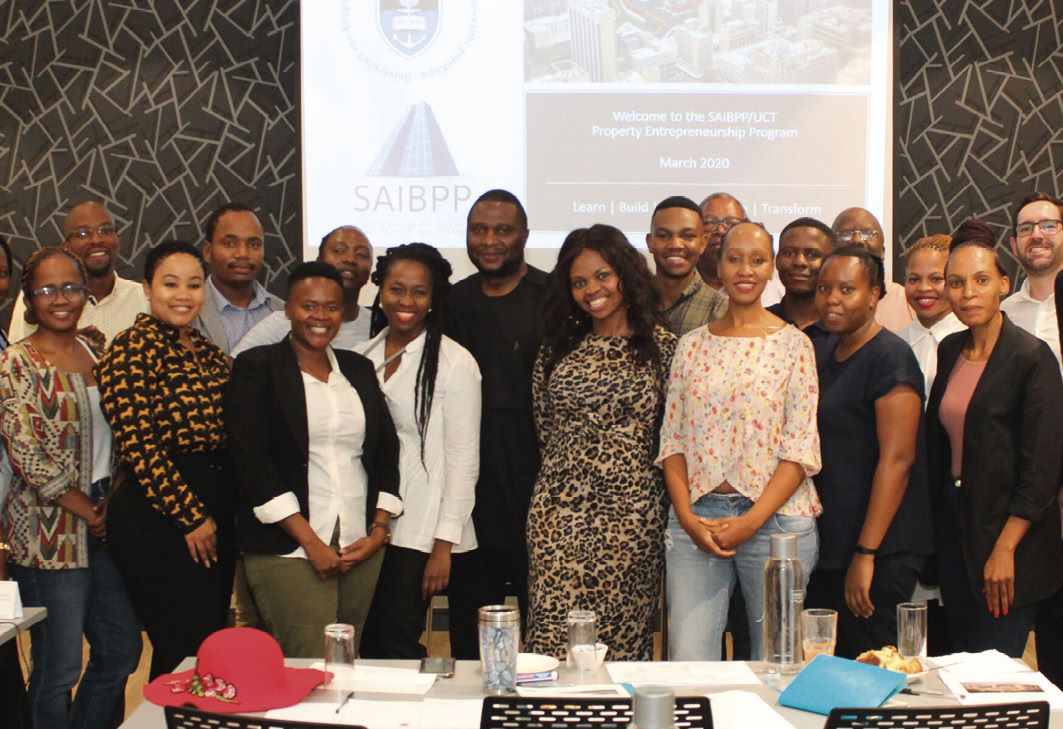
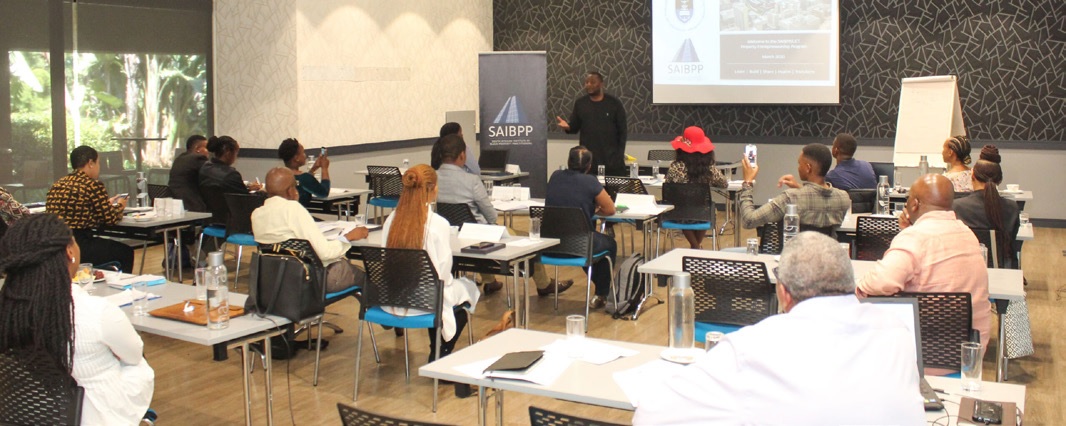
Rali is convinced that entrepreneurship is mostly about motivation. According to him, “The key message is that it is not about the money, it’s about the drive. It’s about the passion of wanting to do something and actually going out and achieving it.” He recently told a gathering of young people, “You do not need money to make money in real estate or in business in general.”
Rali referenced the many immigrants into South Africa from countries like Switzerland or Greece who have stories of arriving with very little and working their way to success. “So, I tell young people wherever I go, ‘Be like those Greek guys who come to this country with nothing and built their businesses.’”
The mentorship programme is a way of bringing new blood into the old business of real estate and training young people to understand the principles. Applications open in January of every year for entry onto the programme. Says Rali, “We want to motivate them to get out there and to grow their businesses.”
Find out more
- Read more in The Journal of African Business, Issue 7 – Sept/Oct/Nov 2023
- South African Housing and Infrastructure Fund (SAHIF): https://www.sahiffund.co.za/
- Mampeule Foundation: https://mampeulefoundation.org/

